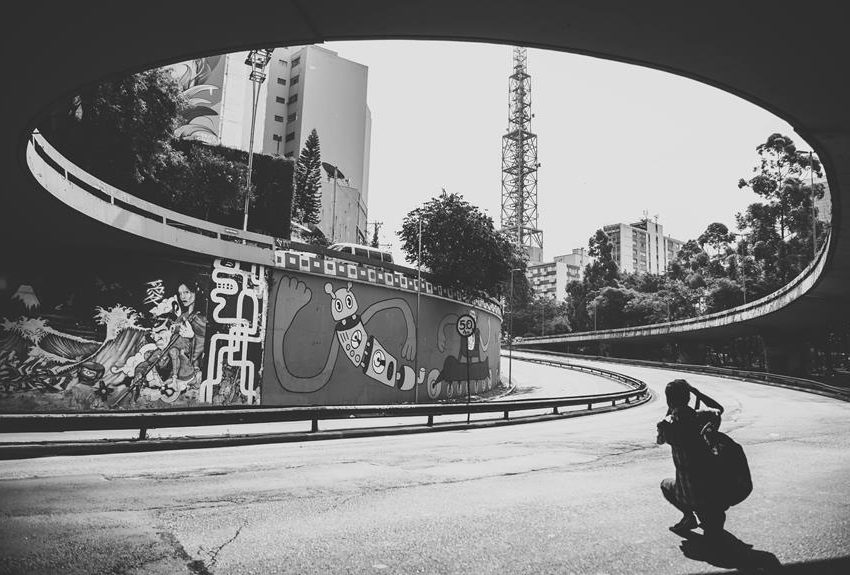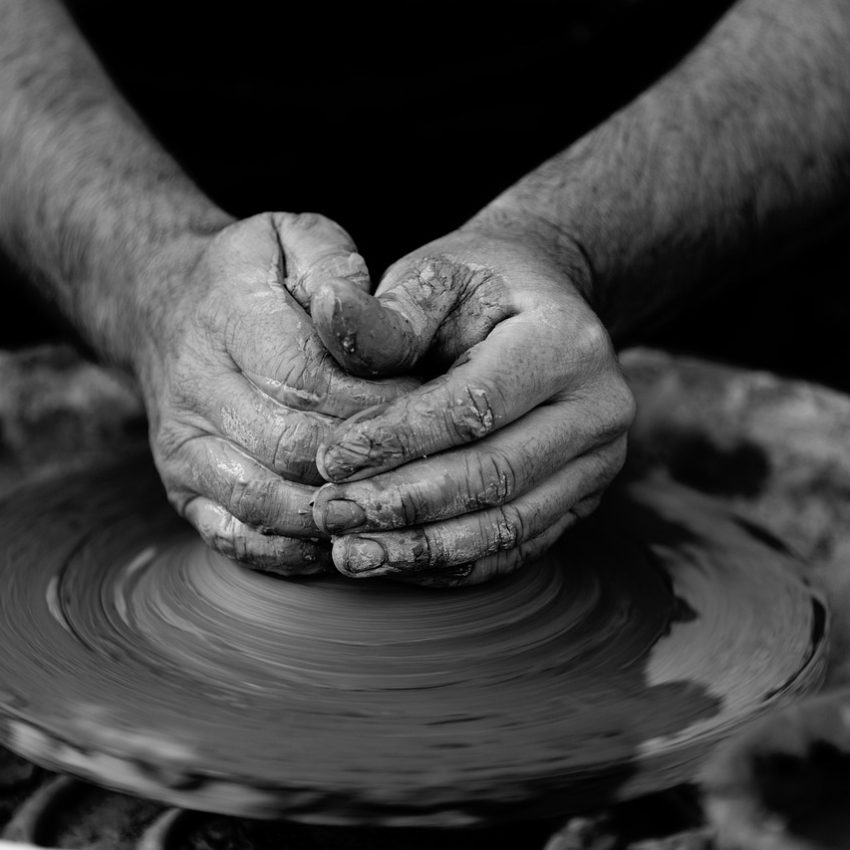Exploring the Colorful Universe of Jeff Koons
Born 1955: Understanding Jeff Koons' Formative Years
In a kaleidoscope of creativity that transcends traditional boundaries, Jeff Koons emerges as a luminary in the contemporary art world, constantly pushing the limits of innovation and imagination. His life-size sculptures and installations at sites like Rockefeller Center underscore his commitment to making art accessible and engaging for a wide audience. Born in York, Pennsylvania in 1955, Koons honed his artistic skills at prestigious institutions like the School of the Art Institute of Chicago and the Maryland Institute College of Art in Baltimore, earning his BFA in 1976. Since his inaugural solo exhibition in 1980, Koons’s artistic trajectory has evolved from small-scale assemblages of toys and found objects to monumental masterpieces, including his renowned balloon animals crafted from mirror-polished stainless steel and his whimsical Puppy sculpture permanently installed at the Guggenheim Museum Bilbao.
The Artistic Vision
Jeff Koons’ artistic vision transcends traditional boundaries, inviting viewers into a realm where consumer culture and high art collide with both whimsy and profundity.
Central to his work is a deliberate manipulation of popular culture references, from iconic figures like Michael Jackson to everyday objects like balloons, transforming them into larger-than-life sculptures that challenge our perceptions of value and meaning. Through carefully crafted installations, Koons critiques the commodification of art itself, questioning the line between commercialism and creativity.
By infusing his creations with a sense of playfulness rooted in serious contemplation, Koons beckons us to reconsider our relationship with mass-produced symbols and artworks.
His exploration of themes such as childhood nostalgia intertwined with capitalist excess serves as a mirror reflecting society’s obsession with consumption—and prompts us to question the very essence of contemporary art’s place in a world dominated by materialism.
Throughout his career, Koons has continued to engage with American pop culture, evident in his Popeye and Hulk Elvis series, which feature inflatable characters juxtaposed with other objects to create dynamic and sometimes whimsical compositions.
His fascination with metaphysics, first explored in his Equilibrium works, persists in his Antiquity series, underscoring his enduring commitment to probing the deeper philosophical implications of his art.
During the mid-1990s, Jeff Koons expanded his artistic repertoire with the introduction of his Celebration series, marking a notable evolution in his Pop sensibility.
Koons created series is celebrated for its vibrant and life-size sculptures that delight and provoke audiences around the world. Characterised by hyperrealistic paintings and large-scale sculptures, this series depicted vibrant, brightly coloured images drawn from everyday life, including plastic figurines, Play-Doh, and jewelry.
By conflating the readymade with monumental scale, Koons transformed these humble objects into abstract symbols of transcendence and biological vitality, reflecting his enduring fascination with childlike consciousness and communication.
Subsequent to this, in 2000, Koons debuted seven new works at the Deutsche Guggenheim as part of his Easyfun-Ethereal paintings series. Drawing from his earlier Easyfun series, these layered, collage-like tableaux incorporated cut-out photographs of packaged foods, paradisiacal landscapes, and fragments of women’s features.
Koons explained that by integrating such diverse elements, he aims to celebrate and critique consumer culture simultaneously. This body of work showcased Koons’s ongoing interest in the simple pleasures of visual culture and further demonstrated his ability to create uncanny, imaginative panoramas that challenge traditional notions of representation and reality.
In his first solo exhibition in New York, Jeff Koons presented a diverse selection of paintings and sculptures that showcased his innovative approach to art. Among the works by Koons featured in the exhibition were pieces from his Silver Series, which captivated audiences with their gleaming surfaces and intricate details.
Additionally, Koons unveiled one of his unique versions of the glass gazing ball, incorporating a transparent color coating and live flowering plants to create an immersive sensory experience for viewers.
This exhibition marked a significant moment in Koons’s career as an American artist recognized for his groundbreaking techniques and bold artistic vision. Hailing from his hometown of York, Koons’s journey from the College of Art in Baltimore to the bustling art scene of New York City epitomises his relentless drive to push the boundaries of contemporary art.
Through his paintings, sculptures, and installations, Koons continues to try to create thought-provoking artworks that challenge conventional notions of beauty and transcendence, leaving an indelible mark on the art world.
Iconic Works: Recreating Banality with Brilliance
Koons’s celebration series, which includes his “Gazing Ball Paintings,” reflects his exploration of the meaning of art and the role of the readymade in contemporary society. He has stated that much of his work is inspired by his intuitive machines, blending elements of pop culture with art historical references, represented in his sculptures that often feature inflatables. Koons’s sculptures depicting everyday objects challenge traditional views of art and have earned him recognition as one of the most expensive living artists. These koons created pieces serve as a testament to his innovative approach in merging the realms of high art with popular culture.
Jeff Koons’s exhibition at the Whitney Museum of American Art showcased his iconic sculptures, including his famous balloon animals and mirror-polished stainless steel pieces. The life-size artworks demonstrated Koons’s unparalleled skill in transforming simple concepts into monumental expressions of art. Jeff Koons rose to prominence in the mid-1980s as part of a generation of artists pushing the boundaries of American art, often incorporating inflatables into his work to challenge traditional notions of sculpture. Born in York, Pennsylvania in 1955, Koons studied at the Maryland Institute College of Art before attending the School of the Art Institute of Chicago. His work has been presented at major institutions worldwide, including the Museum of Modern Art and the Tate Modern.
Art in America: Art Magazine Ads : Flash Art
Having previously worked as a stockbroker, Jeff Koons possesses a familiarity with the commercial realm. In 1988, his ‘Banality Series’ exhibition was promoted through ‘Art Magazine Ads’, employing conventional advertising tactics. Koons strategically utilized these ads not only to generate publicity for the exhibition but also to preempt any potential negative reactions. Much like the provocative nature of the exhibition itself, these advertisements challenged traditional notions of ‘high art’ while simultaneously embracing elements of popular culture. Emblazoned with slogans like “Exploit the Masses / Banality as Saviour,” the ads embodied Koons’ intention to dismantle feelings of bourgeois guilt and shame associated with responding to banal subject matter.
Controversies Surrounding His Art
Made in Heaven & Artworks for sale
Jeff Koons’ provocative and boundary-pushing art has not been without its share of controversies. One of the most debated pieces is his Made in Heaven series, which featured explicit sexual content involving Koons and his then-wife, Cicciolina. Koons has stated that this series was a deeply personal exploration of intimacy and the boundary between art and life.
These works, often created with mirror-polished stainless steel with transparent color coating, highlight the provocative nature Koons is known for. Situated in prominent locations like Rockefeller Center, Koons’s public sculptures become landmarks that captivate and engage passersby in unexpected ways.
Critics have condemned this work as vulgar and lacking artistic depth, arguing that it prioritizes shock value over meaningful expression. Despite the uproar, supporters of Koons defend these pieces as reflective of human relationships and vulnerabilities in a candid manner that challenges societal taboos.
In addition to the explicit nature of some works, Koons has also faced backlash for accusations of plagiarism. The sculpture Balloon Dog raised allegations that he copied ideas from lesser-known artists without proper credit or acknowledgment.
Despite the controversies, views of Koons and his work remain varied, with many celebrating his ability to challenge and redefine the parameters of contemporary art.
This controversy sparked discussions about intellectual property rights in the art world and raised questions about originality versus appropriation in contemporary art practices, a theme frequently explored in the Koons retrospective.
While some view these criticisms as valid concerns aligning with ethical standards in creative fields, others see them as attempts to stifle artistic freedom and innovation through stringent rules on inspiration sourcing.
As Jeff Koons continues to push boundaries with his art, these controversies serve as reminders of the complex intersections between creativity, ethics, and public perception within the dynamic realm of modern artistry.
Legacy and Influence
Made in Heaven & Artworks for sale
Jeff Koons’ provocative and boundary-pushing art has not been without its share of controversies. One of the most debated pieces is his Made in Heaven series, which featured explicit sexual content involving Koons and his then-wife, Cicciolina. Koons has stated that this series was a deeply personal exploration of intimacy and the boundary between art and life.
These works, often created with mirror-polished stainless steel with transparent color coating, highlight the provocative nature Koons is known for. Situated in prominent locations like Rockefeller Center, Koons’s public sculptures become landmarks that captivate and engage passersby in unexpected ways.
Critics have condemned this work as vulgar and lacking artistic depth, arguing that it prioritizes shock value over meaningful expression. Despite the uproar, supporters of Koons defend these pieces as reflective of human relationships and vulnerabilities in a candid manner that challenges societal taboos.
In addition to the explicit nature of some works, Koons has also faced backlash for accusations of plagiarism. The sculpture Balloon Dog raised allegations that he copied ideas from lesser-known artists without proper credit or acknowledgment.
Despite the controversies, views of Koons and his work remain varied, with many celebrating his ability to challenge and redefine the parameters of contemporary art.
This controversy sparked discussions about intellectual property rights in the art world and raised questions about originality versus appropriation in contemporary art practices, a theme frequently explored in the Koons retrospective.
While some view these criticisms as valid concerns aligning with ethical standards in creative fields, others see them as attempts to stifle artistic freedom and innovation through stringent rules on inspiration sourcing.
As Jeff Koons continues to push boundaries with his art, these controversies serve as reminders of the complex intersections between creativity, ethics, and public perception within the dynamic realm of modern artistry.
Legacy and Influence
Jeff Koons stands as a luminary in the realm of contemporary art, his impact transcending mere aesthetic appreciation to redefine the very essence of modern artistic expression. Through the creation of koons sculptures and public interventions, he challenges preconceived notions of art and its function in society. Through his audacious creations that blur the lines between high and low culture, Koons has provoked a reevaluation of traditional definitions of artistry. His monumental sculptures challenge conventional notions of beauty and provoke discussions on consumerism, popular culture, and materialism. The resonance of Koons’ work extends far beyond museum walls; it permeates cultural consciousness, sparking dialogue on the intersection of art, society, and commercialism.
Koons’ influence reverberates globally across diverse artistic landscapes, inspiring a new generation of creators to push boundaries and defy norms with techniques reminiscent of Koons’ innovative use of materials like inflatables. By infusing whimsy with profound philosophical underpinnings in his works, he not only captivates audiences but also invigorates a sense of wonder about what art can achieve. Artist Jeff Koons leverages his unique perspective to challenge and expand our understanding of art’s potential. The ripple effect of his oeuvre is evident in the playful yet deeply resonant pieces emerging from artists worldwide who have been emboldened by Koons’ unapologetic embrace of eclectic inspirations, including his use of inflatables in sculpture. To fully grasp Koon’s legacy is to recognize how he has left an indelible mark on contemporary art – not merely as an artist but as a visionary who challenges us to reconsider our preconceived notions about creativity itself.
Unraveling the Everlasting Charm of Jeff Koons' Artistic Legacy
As we ponder the enduring allure of Jeff Koons’ artistic repertoire, it becomes evident that his creations possess a timeless quality that transcends mere trends. The playful yet profound nature of his pieces captivates audiences across generations and continues to spark conversations about the essence of contemporary art. By seamlessly blending high and low culture, Koons has carved a niche in the art world where accessibility meets thought-provoking depth, ensuring that his legacy remains etched in the annals of art history.
Looking ahead, one cannot help but wonder about the future directions of Jeff Koons’ artistic journey. As Koons makes plans for upcoming projects, there is anticipation for how his creative evolution will continue to influence the landscape of contemporary art. Will he continue to push boundaries with his innovative techniques and larger-than-life installations, such as those featuring inflatables and mirror-polished stainless steel with transparent color coating? Or might he surprise us with a shift towards more introspective themes, delving deeper into personal narratives and emotions? Whatever path he chooses, one thing is certain: Jeff Koons will undoubtedly remain a central figure in shaping the landscape of modern art, inspiring both artists and admirers to embrace creativity without limits.
Jeff Koons’s exhibition at the Whitney Museum of American Art showcased his iconic sculptures, including his famous balloon animals and mirror-polished stainless steel pieces. Koons rose to prominence in the mid-1980s as part of a generation of artists pushing the boundaries of American art. Born in York, Pennsylvania in 1955, Koons studied at the Maryland Institute College of Art before attending the School of the Art Institute of Chicago. His work has been presented at major institutions worldwide, including the Museum of Modern Art and the Tate Modern.
Koons’s celebration series, which includes his “Gazing Ball Paintings,” reflects his exploration of the meaning of art and the role of the readymade in contemporary society. He has stated that much of his work is inspired by his intuitive machines, blending elements of pop culture with art historical references. Koons’s sculptures depicting everyday objects challenge traditional views of art and have earned him recognition as one of the most expensive living artists.
In addition to his sculptures and paintings, Koons is known for his art magazine ads and strategic placement of artworks for sale, often featuring his signature mirror-polished stainless steel with transparent color coating. His artworks command high auction prices and are sought after by collectors and brokers alike. Koons’s retrospective at the Pace Gallery in New York further solidified his status as an American artist of major art-historical importance.
With his unique versions and innovative use of materials such as stainless steel with transparent color coating, Koons continues to push the boundaries of contemporary art. His work can be found in prestigious collections, including the Ashmolean Museum and Glenstone Museum in Potomac. Koons sculptures and creations continue to inspire and provoke dialogue among critics, scholars, and the general public alike. Koons’s impact on the art market and his prominence in the art world are undeniable, cementing his place as a leading figure in American art today.





